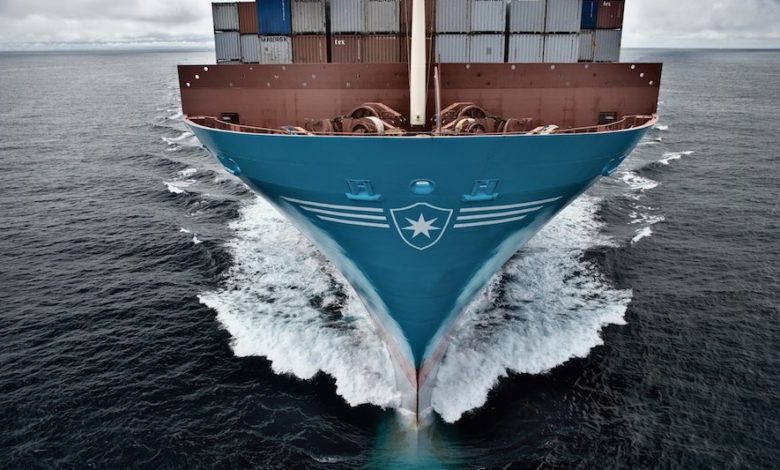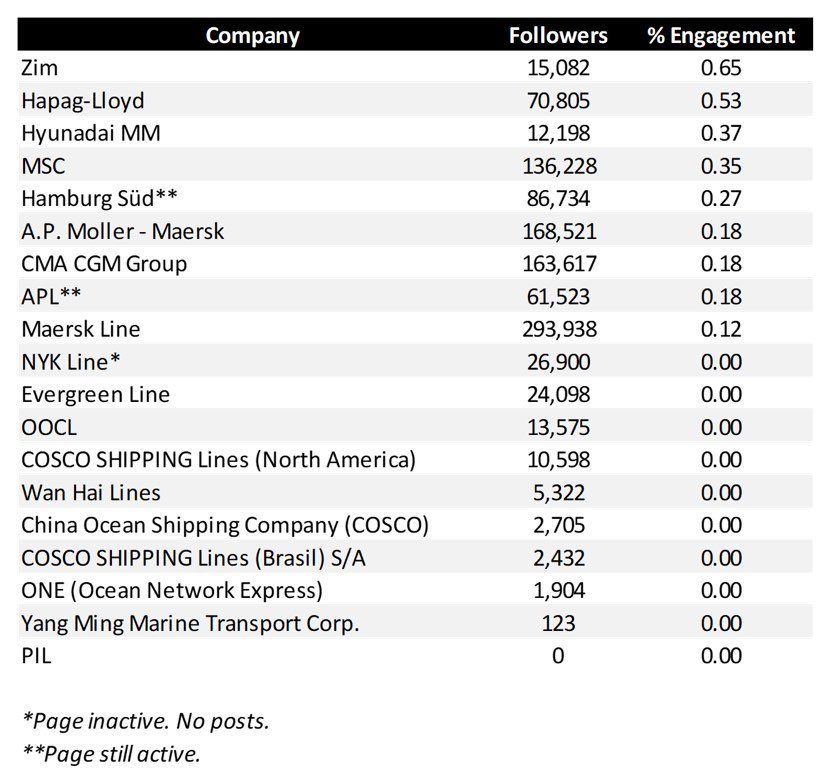Social Media Performance: The Liners

As some of the biggest shipping companies around, liners often take the spotlight in the shipping industry’s public profile. The larger players have led the way in industry marketing and public relations efforts, both in terms of professionalism and an appreciation of the importance of brand. You want a Lego container ship – it’ll be Maersk branded (and awesome).
The Liners
No names, of course, but several liner companies have excelled at telling the industry just how good and successful they are at social media use (you know who you are). But how well do they really stack up against each other on LinkedIn, the most business-focused of all the social media platforms?
Zim and Hapag-Lloyd are the stand-out performers for the engagement they are getting on social media, with their content resonating with their followers. Hapag-Lloyd also take the time to regularly engage with comments and jobseekers online. These two companies are my pick for the best of the liners on social media

Follower numbers are strong for liner almost all companies – regardless of platform use. It seems some of the industry understands that thousands of people have signed up for company information, and this is a valuable marketing resource. Other companies have, in ‘old school’ terms, put their followers and clients on hold. Many of these companies do have active social media programs but are not using LinkedIn. PIL for example runs Facebook and WeChat accounts, though we couldn’t find an active branded/official LinkedIn account.
Branding in a time of change
Like everyone else in shipping, there’s been no hiding from the bad times. The liner sector has undergone as much change as anyone in recent years—mergers, acquisitions, and bankruptcies have dramatically changed the face of shipping.
Mergers and acquisitions can play havoc with brands. The creation of ONE (Ocean Network Express) shows the impact of starting all over. NYK and MOL had LinkedIn pages with tens of thousands of followers and these pages are now sitting dormant (though still growing in follower numbers). Using a decentralized strategy, APL and Hamburg Süd still have independent active pages. Marketing teams face some tough decisions on how to use old sites with strong numbers…there is no easy answer here.
Are these results a surprise?
Yes….and no. When first running these figures, we assumed the companies with the biggest budgets and marketing teams would come out on top. And, when they get their content right, the big companies’ numbers are as good as anyone’s. But too often big companies focus on the wrong content and ignore the sort of material their followers and clients want. Content is typically driven by HQ marketing teams, creating issues around regional relevance and information distribution.
Overall, the results for the liner sector are disappointing. Nearly every week we are told how the sector is responding to the challenges of digitization, how they are delivering superior service to clients, and how corporate values are a competitive point of difference (see numerous painful corporate videos). But on social media most of the liner companies are rudderless.
Methodology
As with our previous assessment of shipmanagers, the above figures were generated using a simple method to compare social media performance, focusing on engagement over an activity period rather than measuring success in follower numbers. Engagement – someone taking an action because of your activity – is the true measure of success on social media. After all, the whole point of social media is to be social and to connect with an audience – though Hapag-Lloyd’s numbers have been inflated by around 15% by a single person’s ‘enthusiastic’ commenting (handled very well by their social media team it must be said). Looking at engagement as a percentage allows us to compare the performance of companies of vastly different sizes and resources.
Out of all the sectors we monitor, the shipping community uses corporate social media to connect with companies and colleagues more than almost any other industry, and best-practice doesn’t always come from the biggest marketing team.
Read Graeme’s pick of how shipmanagers handle social media here.
